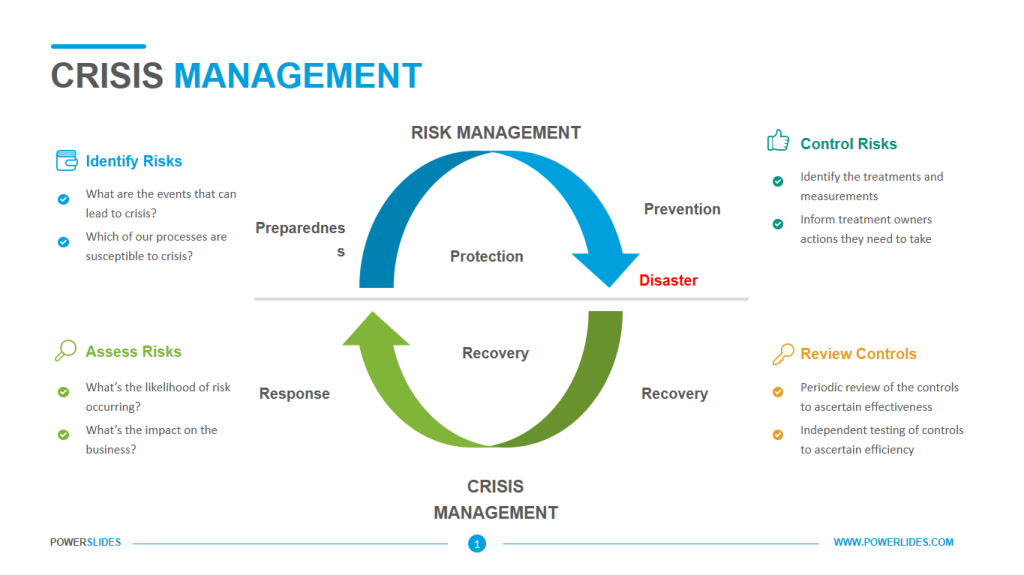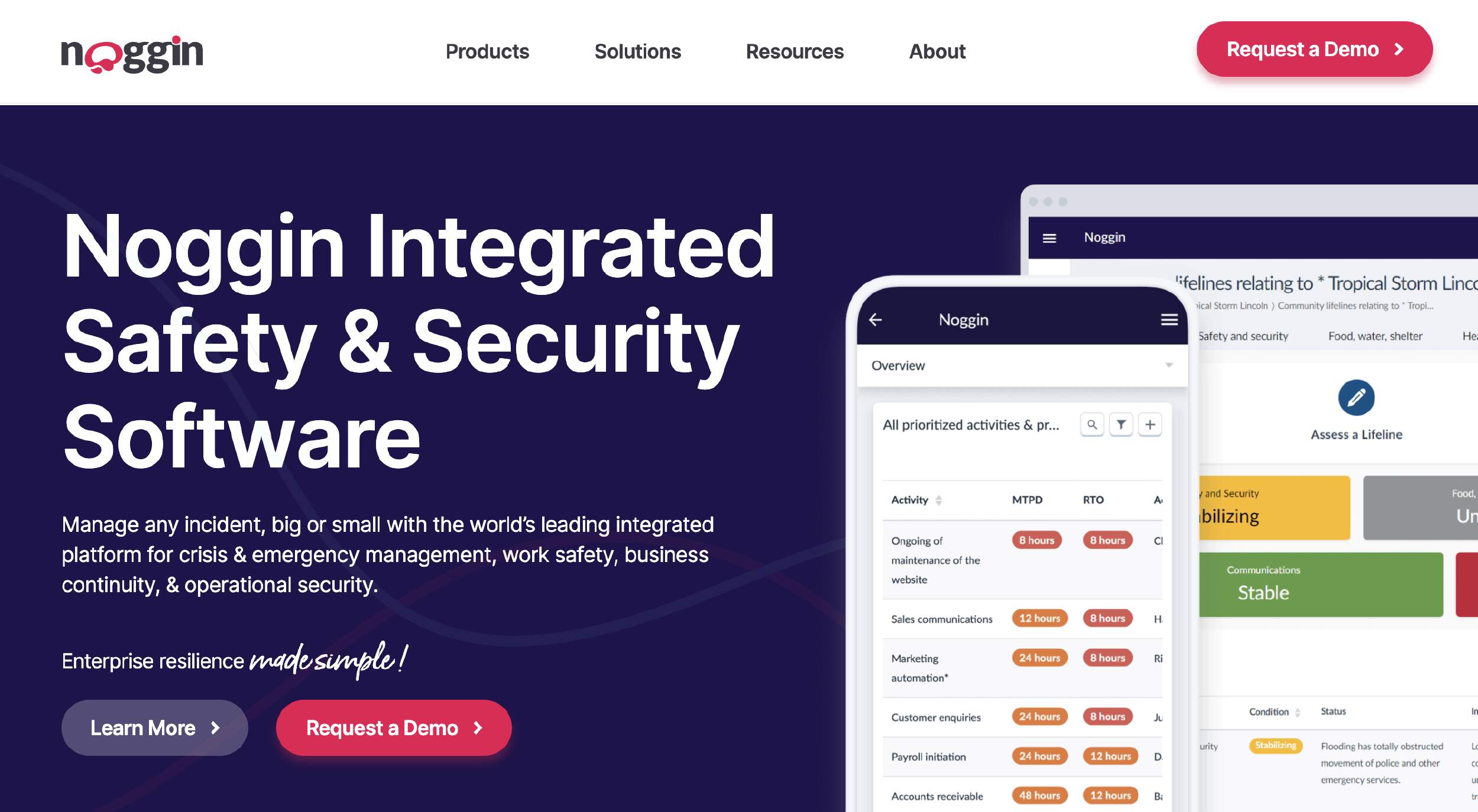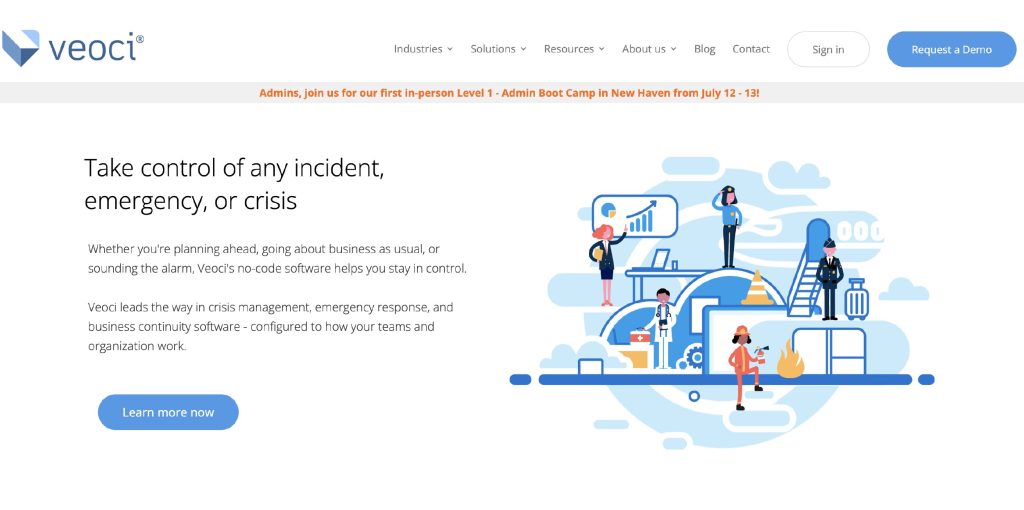It’s easy when things run smoothly, right?
But in today’s digital era, where a potential crisis is just a social media comment away, it’s essential to think of crisis management and procedures which will keep your business running like clockwork all day, every day.
If you think crises happen to somebody else, here’s a fun fact: 69% of business leaders reported experiencing a crisis over a period of five years, with the average number of crises being three. To top that – who would have thought in 2020 that a pandemic was going to hit the whole world leaving very few businesses intact? Not many probably.
Still, it did. And in fact, 20% of businesses reported that the COVID-19 crisis had a positive impact on their business. Meaning – they came prepared.

In this guide, we’ll go through the definition of crisis and crisis management, its stages, and we’ll head on to practical advice on how to create a crisis management plan and which tools to use to make you as ready as ever. Buckle up!
What’s Crisis Management?
Let’s start from scratch – and define what exactly a business crisis is.
A business crisis is any course of events that presents a threat to the success of a certain company. It usually results in hurting a company’s reputation, impacting its finances, and disrupting its usual operations.
A crisis can come from both ways – from within the company and from an external source. It can be one of your employees revealing your business secrets on a social media channel. Or one of your customers starting a rage thread on Facebook because your service was not what they expected. Either way, the possible effects can seriously endanger your business.
The only way to handle it with ease and not so many repercussions is to be well prepared. This pretty much sums up what crisis management is all about.
Crisis management is the process of preparing for and dealing with any situation that is potentially harmful to a company, its employees, customers, or investors.
You can’t plan your crises and mistakes, but you can definitely make sure that your business can handle anything that comes its way.
Read Four Crisis Management Steps to Take to Stop a Disaster
The 4 Ps of crisis management
According to Smartsheet, there are 4 key elements of crisis management:
- Prevent
- Plan
- Practice
- Perform
Apart from this one, there are a couple of different definitions of the most important aspects of crisis management. Some of them include people and positive cash flow, others include the R-actions like research, response, and remorse. But in the end, they all revolve around a couple of common ideas:
- It’s necessary to define what represents a threat to your business. Only in that way, you’ll be able to prepare and prevent serious consequences.
- Well planned is half done – both in life and in business.
- Choosing the right people and giving them clear and detailed instructions is crucial.
- It all comes down to what you can learn from every event and how you can apply it to your business processes.
All of these ideas combined and structured are what makes a great crisis management plan. But we’ll define it in detail in a bit.
First, let’s take a look at the different stages crisis management goes through.
Stages of Crisis Management
Crises come in all shapes and sizes. Still, according to the Institute for PR, there are 3 main stages of crisis management that can apply to all of them. They are pre-crisis, crisis response, and post-crisis. Let’s see what each of these stages covers.
Pre-Crisis Stage
The pre-crisis stage is mainly focused on preparing the best way you can. This involves creating a crisis management plan, choosing your crisis management team, spokespeople and figuring out your messaging as detailed as possible.
In this phase, it is also important to decide which communication channels you’ll be using, and no, having a PR conference is not enough.
Just to clear that one right away.
Based on your customers, decide which channel would be the most appropriate for every respective crisis situation. The more different customer groups you have, the more channels you’ll need to use, and the more extensive your preparation needs to be.

Crisis Response
This is when it gets real. The crisis response phase starts the minute a crisis occurs and involves a lot of fast decisions and immediate action (or at least it should). There are 3 things you should strive for here – you should be quick, accurate, and consistent. With the right preparation, being quick shouldn’t be a problem (or should it?). Accuracy and consistency can sometimes be a challenge when there are multiple people involved in transmitting your message and when there is time pressure. But there are tools that can help you stay right on track and that make sure your whole team is on the same page.
Read Crisis Communications Plan In 8 Steps
Post-Crisis Stage
In the aftermath, when the crisis finishes, it’s always about revising what was done and assessing your strategies. Also, this is the time to measure how much damage you’ve suffered and what you can do to recover.
Every crisis is difficult. But it is also a great way to learn, so make sure to make the most of it.
Crisis Management Plan in a Nutshell
Now that we’ve gone through the stages of every crisis, let’s go back a little bit, and see how to create the most important part of your crisis management strategy – a crisis management plan.
A crisis management plan is a set of procedures that a company uses while dealing with potentially harmful situations and unexpected emergencies. It outlines the types of crises and steps to take if they occur as well as people in charge of handling various situations.
This plan is primarily guided by the industry your business is in for a simple reason. It’s difficult to imagine that a PR agency and a food processing company would have exactly the same definition of a crisis. Therefore their starting point will probably be a little bit different.
Read 4 Ways To Improve Your Crisis Communications Strategy
Why do you need a crisis management plan
Picture this: You’re launching a huge marketing campaign revolving around one of your existing products. You’ve invested a ton of money in giving the product a new and fresh look. You did extensive market research to find out what your target audience thinks and you’re constantly in the loop with everything that’s going on in the market. Also, you’d really wish to jump on the bandwagon of a familiar new trend. But right after the launch, you realize that the wording you used was not well thought through and that it may sound offensive in some markets. The situation escalates and all of a sudden you’re the topic of all the news in the region and the object of ridicule on all social media platforms.
Ouch – now what?
This is where your crisis management plan is set in motion. If you start working on it when the crisis strikes, you’re oh-so-late. In a digital era like ours, bad news travels at the speed of light. So if you’re not fast in reacting, you’ll watch your business drown in outbursts of negative feedback from all over the place.

So simply put, a crisis management plan will keep you prepared for unplanned events and it will prevent long-term damage that could have a considerable effect on your brand.
Let’s go through 5 steps of creating a crisis management plan.
How to Create a Crisis Management Plan
Identify the types of crises and determine their impact
First things first – let’s start with what you consider a crisis in your business and industry. As mentioned before, every industry will not be affected the same by all types of crises. Still, business crises do come in many forms, and identifying them sets you in the right position for dealing with them when they occur.
Read Crisis Management Plan: How to Keep Your Business Afloat?
Some of the most frequent types of business crises are:
Communication crises
These types of crises usually occur when a company or one of its employees is associated with illegal or unethical affairs. It can happen if a company’s CEO makes a really discriminatory public statement or if a certain campaign misses the point and turns out as offensive or rude. This can result in a huge backlash against the company and can seriously endanger its business overall.
Technological crises
We’re down – is every IT business owner’s worst nightmare. Technological crises happen when tech systems stop functioning, servers crash, or software just stops working for some reason. Software downtime can cause considerable financial damage to IT companies. Not to mention the impact that it can have on their potential future leads and their brand reputation.

Product Failure
There are very few things worse than failing to deliver what you promised. Product failures mainly refer to situations where your product value is way below what you’ve promised or even worse when it threatens the safety of your customers. If your product value is far from what you’re selling then expect a backlash of negative comments all over social media and review pages. Not to mention the negative word-of-mouth that can harm your reputation and ruin your brand image.
Financial Crises
Typically, financial crises happen when a company loses cash due to a shortage in demand for its products or services, a loss in its business assets, or an external influence like a natural catastrophe or war. Usually what comes next is a reevaluation of their costs, a search for additional funding, or in the worst-case scenario bankruptcy.

Natural Disasters
Natural disasters are usually very sudden and extreme disasters happening because of environmental factors, such as hurricanes, floods, fires, pandemics, etc. All of these can cause incredible physical damage. Also, they force businesses to take drastic measures and adapt their business processes (like the recent COVID-19 pandemic).
After determining which crises could present the biggest threats to your company, it’s necessary to outline the scope of their impact. Many of the repercussions go hand in hand when the crisis strikes. For example a negative impact on your brand reputation will definitely have financial losses as a consequence as well. Still, you might also want to consider the scope of other possible outcomes. These can be a decrease in customer satisfaction and customer loyalty, an increase in expenses, etc.
Assemble a crisis management team that will deal with each type of crisis
One of the essential parts of creating a crisis management plan is to determine who will be responsible for carrying it out. You may want to include employees which have specific expertise depending on the scope of the business affected, experts from HR, the whole PR department, etc. If you assess that you won’t be able to successfully resolve the crises with your in-house personnel, consider including additional external experts like consultants, lawyers, etc.
Figure out an action plan for every scenario
Now that you’ve defined the types of crises and determined who are the lucky ones on your teams who’ll be putting out fires when the going gets tough, it’s time to create an action plan for every possible scenario. It’s impossible to cover all possible situations. Who would have thought that a pandemic was going to strike the whole planet at the beginning of 2020, right?Still, there are a couple of universal things you should take into consideration like:
- Which aspects of your business will be affected the most under which crisis
- The type of communication you will have
- Which resources you will use
- How long it will take
- To which extent will you have to inform your customers about it
Read Targeted Email Marketing – How to Draft a Perfect Crisis Email
Provide necessary training for all parties involved
When you finish assembling your crisis management teams and you’re sure of the exact steps you’re going to take, make sure all people involved know exactly what they’re doing. If necessary, organize internal workshops or invite external experts to train your employees on how to deal with a crisis.
And don’t forget about the rest of your employees who may not be included directly in the crisis management plans. Make sure that everybody is on the same page around everything and that your entire company knows why and how you’ll go through the process.
Go back to your plan regularly and revise if necessary
Your business will change with time, so changing your business processes is inevitable. You may experience growth, spread to other markets, and an influx of new employees. All this requires a revision of your crisis management plans.
And if you do actually experience a crisis in the process, make sure to inspect how you reacted and assess what you can learn from it.
Top Crisis Management Tools
Noggin
Noggin is an incident response software that increases your efficiency and helps you improve the management of your crisis events. Some of the main features include automated workflows and checklists that send notifications to all members of your team.
You will also get access to digitalized/centralized response plans, exercises, reports, and tasks will be available to everyone, keeping everyone updated. To top it all you’ll get a library with best-practice forms, templates, workflows etc. easily adaptable to your business and speed up your processes.

Veoci
Veoci is a crisis management solution that helps organizations and businesses prepare, handle and recover from any crisis with ease. It is an end-to-end platform that helps you deal with both daily tasks and specific events. You can use it in a wide variety of industries and it covers many solutions like business continuity, daily operations, emergency management, etc.

Determ
Determ is a brand monitoring tool that helps you keep track of what’s currently going on in relation to any keyword you wish. It can be your brand name, key people, competitors, trends, etc. Determ can help you predict crises, react in a timely matter and learn from your competitors’ mistakes.
It functions in a really simple way. Set up a desired query and you’ll get access to mentions from more than 100+ million sources online. These include social media like Facebook, Instagram, Twitter and TikTok, forums and review pages, all of this in real-time.
And if you have trouble interpreting all this data from a dashboard, you have the option of exporting a really neat report that will show trends in specific sources, related industry influencers, sentiment, etc. What is more, you can set up real-time alerts so you get notified whenever you’re mentioned somewhere online (smart alerts) or when there is an unusual increase in the number of mentions of the keyword you’re tracking (spike alerts). You don’t even have to be tagged! In this way you can make sure that your reaction will be timely and that you’ll prevent a greater crisis from happening.

To Sum Up
Crises are never easy and pleasant. These events always cause disruptions in your regular operations and make you rethink what you’re doing. Additionally, you always need to make a lot of decisions very fast, and act as soon as possible, which is in itself pretty stressful.
However, if you’ve set up your crisis management procedures in the right way and on time, you can get out of it with minimal damage. Remember the 20% of businesses that reported that the COVID-19 crisis had a positive impact on their business from the beginning? Here’s their secret: most of them report that they’ve given extra attention to organizational resilience.
So, with a detailed crisis management plan, the right people and some help from crisis management tools you can be sure that the next crisis you’re going to experience will be a walk in the park (with a drizzle or two).



